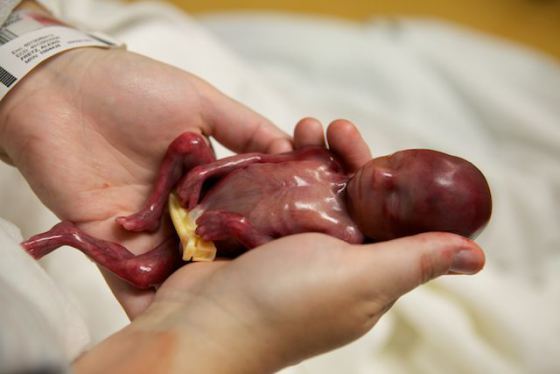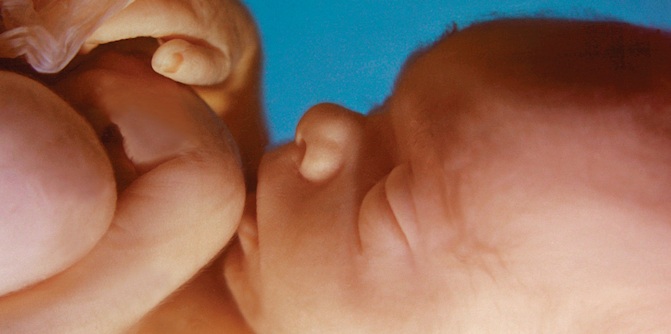While pro-abortion groups claim that pro-lifers are turning to “junk science” to pass restrictions on late-term abortions, substantive research shows that preborn babies do feel pain— possibly with an even greater intensity than adults.
The LA Times recently addressed such abortion regulations, claiming that bans on late-term abortion procedures across the country are being passed on the basis of “junk science.”
The publication refers to a JAMA 2005 study that claims preborn children cannot feel pain until 27 weeks gestation. The article cites the American Congress of Obstetricians and Gynecologists, noting that no new studies have since altered the JAMA study.

Walter Joshua Fretz who was born at 19 weeks. Credit: Lexi Fretz & F2 Photography
However, new research shows that preborn children may feel pain at 20 weeks. Researchers note that pain receptors appear around the mouth roughly four to five weeks after fertilization, and the preborn child can respond to touch at six weeks. By 18 weeks, “pain receptors have appeared throughout the body.”
Preborn children also have an “early fetal response to painful stimuli,” researchers say. These can be detected roughly five weeks after fertilization. And, not only can preborn children feel pain, they may feel it more intensely. In 2004, Dr. Kanwalijeet “Sunny” Anand testified the following before Congress:
“Mechanisms that inhibit or moderate the experience of pain do not begin to develop until 32 to 34 weeks post-fertilization,” Anand said. “Any pain the unborn child experiences before these pain inhibitors are in place is likely more intense than the pain an older infant or adult experiences when subjected to similar types of injury.”

Preborn baby at 20 weeks of development.
Dr. Maureen Condic and other experts also testified to Congress that preborn children can feel pain by 20 weeks.
Doctors on Fetal Pain refuted the claims of the JAMA study, noting that it is the “most frequently cited source…”
The JAMA authors concede that pain receptors are present throughout the unborn child’s entire body by no later than 16 weeks after fertilization and nerves link these receptors to the brain’s thalamus and subcortical plate by no later than 20 weeks post fertilization.
They also concede that the application of painful stimuli is associated with significant increases in stress hormones known as the stress response. Notwithstanding these facts, the authors deny unborn pain at that stage on the assumption that a functioning cerebral cortex is needed. However, see point number one above for the substantial medical evidence that the thalamus alone is sufficient.
In addition, researchers highlight the JAMA study’s interesting connection with the abortion industry:
Moreover, rather than the article being an independent neutral representation of mainstream medical analysis, its lead author (who went on to pursue medical studies after publication) was previously employed as a lawyer by NARAL, the pro-abortion political advocacy organization. The Philadelphia Inquirer was the first to document several authors’ conflicts of interest. More can be found here.
James D. Agresti, who studied fetal pain and “conscious, deliberate behaviors” in twins, noted the miraculous motor ability of preborn children. Based on a study from PLOS ONE, researchers found that “starting from the 14th week of gestation, twin fetuses plan and execute movements specifically aimed at the co-twin.” And, such “early contacts do not occur accidentally, but reflect motor planning.”
A 2012 Fetal Diagnosis and Therapy paper explains that 16 weeks after the woman’s last menstrual period, “… pain transmission from a peripheral [pain] receptor to the cortex is possible and completely developed from 26 weeks gestation.” A 2001 paper in Anesthesiology mentions that “the human fetus from 18-20 weeks elaborates pituitary-adrenal, sympatho-adrenal, and circulatory stress responses to physical insults.”
If preborn babies could not feel pain, why would they scream when born alive as a result of botched late-term abortions? Is this not proof enough?
The abortion movement seems all too willing to rely on science that agrees only with their point of view, even when studies, science, or real life examples prove otherwise.







